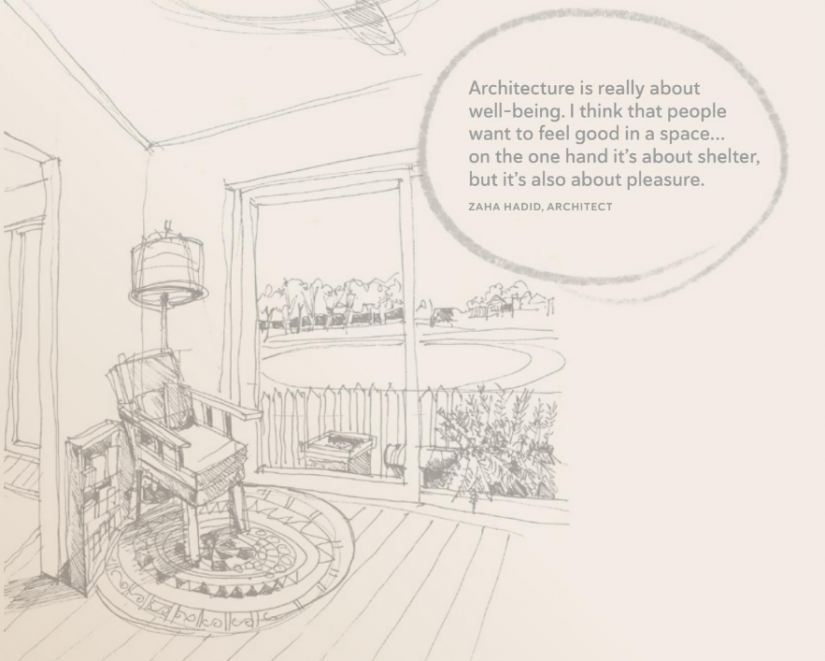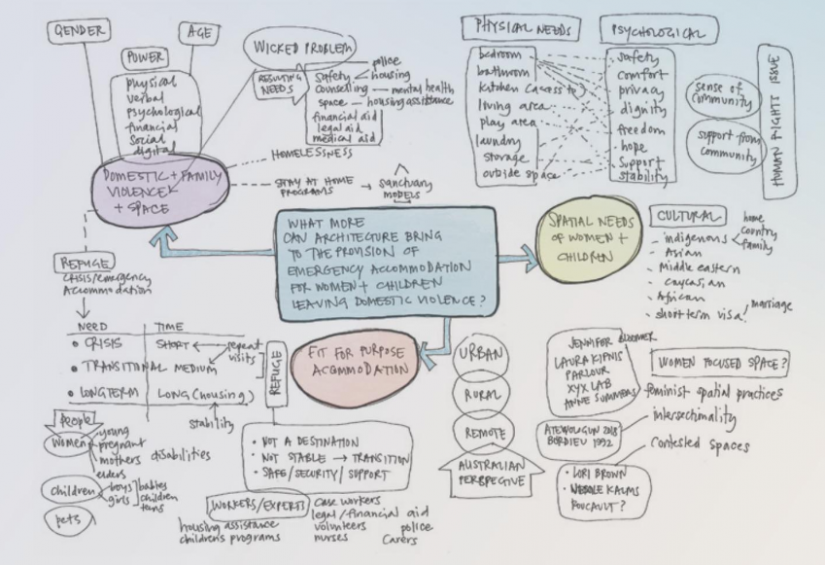Building a better future for women leaving domestic violence
One hundred and fifty-six requests for emergency accommodation from women go unmet every day in Australia, according to the Australian Institute of Health and Welfare. Looking more locally, since the first women’s refuge opened in Glebe in 1974, the need for safe, accessible crisis accommodation has dramatically increased.
Samantha Donnelly, lecturer in the UTS Faculty of Design, Architecture and Building, is researching how to improve accommodation outcomes for women and children leaving domestic and family violence.
Today she launched the Urban Refuge Design Guide for refuge accommodation for women and children.

An illustration from the Design guide for Refuge accommodation for women and children © Samantha Donnelly
The guide is informed by Samantha’s conversations with refuge users, workers and providers in NSW, and facilitated discussion between construction industry experts and the refuge sector. It offers a live record of the current state of refuge accommodation and an ongoing framework to assist discussions with refuge providers and those working on finding housing pathways. The guide outlines three levels of good practice design led principles for creating and maintaining refuge accommodation spaces.
This research was undertaken through a UTS Shopfront Community Fellowship with support of the UTS Domestic Violence Committee. The project also received funding from a Social Impact Grant from the Centre for Social Justice and Inclusion.

Context/situation map of issues relating to women's refuge accommodation. © Samantha Donnelly
Underlying this project, and supported by preliminary research, is the proposition that if more women and children are able to access safe, fit-for-purpose, long-term accommodation where specialist support services can be provided, then the cycle of domestic violence can be disrupted. Addressing violence and homelessness forms the foundation of the project. Applying research and design can enable the built environment to function in positive and technologically advanced ways for enhanced social good.
If you are interested in accessing the guide, please contact Samantha Donnelly.
